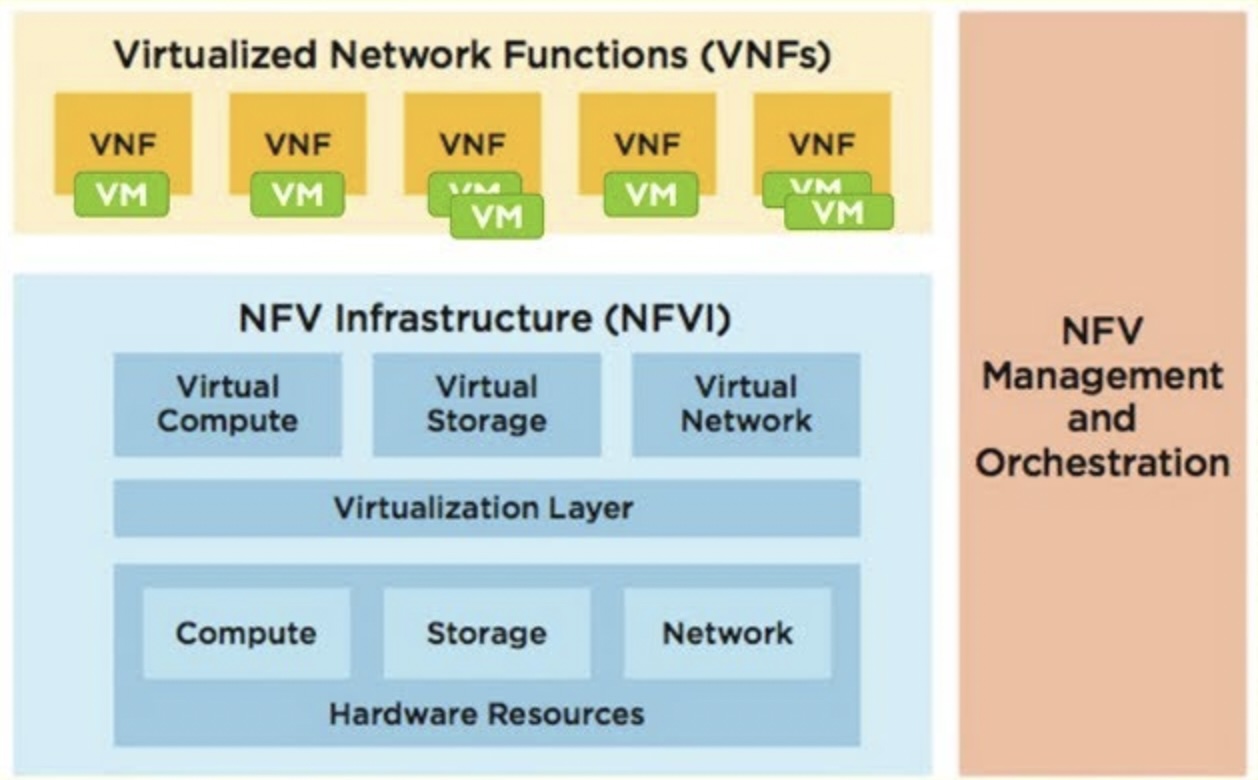Introduction: Network Function Virtualization (NFV) is a transformative approach to network architecture that promises to revolutionize the way service providers and enterprises design, deploy and manage their networks. By decoupling network functions from specialized hardware devices and moving them to virtualized software instances, NFV provides greater flexibility, agility and cost savings.
What is NFV?
Traditionally, network functions such as routing, firewalling and load balancing are performed by specialized hardware devices. NFV replaces these physical devices with virtualized software instances that can run on standard x86 servers. This allows network functions to be linked in software, creating a more flexible and agile network architecture.

Benefits of NFV:
-
Lower Costs
By eliminating the need for specialized hardware devices, NFV can significantly reduce capital and operating costs. Virtualized network functions can be started and turned off on demand, achieving better resource utilization and lower energy consumption.
-
Increased agility
NFV enables network functions to be deployed and interconnected more quickly, allowing service providers and enterprises to respond more quickly to changing network requirements.
-
Improved scalability
Virtualized network functions can easily scale to meet changing traffic demands, making it easier to handle large spikes in network traffic
-
Increased flexibilityg
NFV allows network functions to be updated or upgraded independently, making it easier to deploy new services and features.
Applications: NFV has a wide range of applications, from mobile networks to data centers. Some examples are:
-
Virtualized Evolved Packet Core (vEPC)
Mobile network operators can use NFV to virtualize the functions of the Evolved Packet Core, making it easier to scale and manage mobile data traffic.
-
Virtualized Customer Premises Equipment (vCPE)
Service providers can use NFV to virtualize network functions such as routing, firewalling and WAN optimization and manage them remotely for customers.
-
Virtual Network Functions (VNFs)
NFV makes it possible to create a wide range of virtualized network functions, such as virtual firewalls, virtual load balancers and virtual VPN gateways.
Conclusion: NFV is a major development in the networking industry that could have a revolutionary impact on the way networks are designed, deployed and managed. By virtualizing network functions and deploying them to commodity hardware, NFV provides a flexible and agile network architecture that can help respond to the rapidly changing demands of modern networks.
Interested in the possibilities of NFV for your organization? Contact us, we are happy to help you.